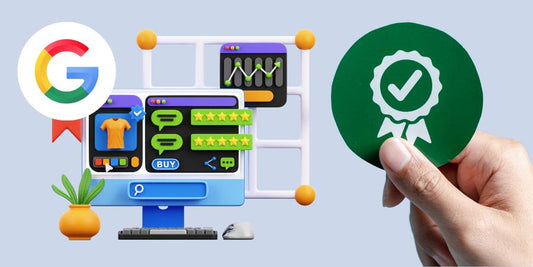As someone who works with Shopify e-commerce websites every day, I’ve seen firsthand how strategic Search Engine Optimization (SEO) can transform a Shopify store’s traffic and sales. At Shop Innovator, we help brands optimize their Shopify sites, so they rank higher and attract the right audience. Today, I’m sharing seven key tips that have helped countless Shopify businesses grow.
1. Use Keywords Strategically in Products & Collections
When it comes to Shopify SEO, product and collection pages are your bread and butter. Research relevant keywords that match your customers’ search intent and naturally incorporate them into:
- Product titles
- Descriptions
- Alt text for images
- Meta titles and meta descriptions
For example, if you sell "gas fire pits", you might target phrases like “propane fire pits” or “stone gas fire pits.” Tools like Google Keyword Planner, Ahrefs or SEMRush can help you identify keywords with high search volume and low competition.
In addition to product pages, don’t overlook optimizing collection pages. These pages group related products together, making them ideal for targeting broader keywords. For instance, if you sell outdoor gear, your collection page could target keywords like “outdoor adventure equipment” or “camping essentials.” Use descriptive titles and meta descriptions for your collections, and ensure the page content highlights the unique benefits of the products included.
2. Optimize Shopify Themes for Speed
Did you know that 53% of users abandon websites that take more than 3 seconds to load? Site speed impacts user experience and is also a ranking factor for Google. To keep your Shopify site fast:
- Choose a lightweight Shopify theme
- Compress images before uploading
- Minimize the use of heavy scripts and apps
Additionally, consider enabling lazy loading for images. This ensures that images only load when they are about to appear on the screen, reducing initial load times. Use apps like TinyIMG or Shopify’s built-in features to automate image optimization. Also, evaluate and remove unnecessary third-party apps that might be slowing your site down.

Faster Shopify sites lead to higher customer retention and conversions.
3. Enable Schema Markup
Schema markup helps search engines understand your site better, improving your visibility in search results. Shopify has plugins and tools that make adding structured data easier, like JSON-LD for SEO. Use schema for:
- Product information
- Reviews
- Pricing and availability
In addition to product-specific schema, consider implementing FAQ schema on relevant pages. If you include frequently asked questions on your product or collection pages, FAQ schema can help these appear directly in search results, improving click-through rates. Adding breadcrumbs schema can also improve navigation and enhance search appearance.
This can help your products appear in rich snippets, catching the eye of potential customers.
4. Create High-Quality Blog Content
Blogging isn’t just for lifestyle brands. Writing informative and keyword-rich articles can position your store as an industry authority and drive organic traffic. For instance, if you sell kitchen tools, write blog posts about “10 Time-Saving Kitchen Hacks” or “Best Cookware for Healthy Meals.”
Expand the value of your blogs by incorporating video content or downloadable resources. Tutorials, product demos, or printable guides can make your blog more engaging and shareable. Also, ensure each blog includes a clear call-to-action (CTA), directing readers to related products or your email newsletter.
Make sure each post links to relevant products in your store, encouraging readers to browse while staying on your site longer. And, add ALT tags to photos in the article.

5. Use Internal Linking to Strengthen Your SEO
Internal links help search engines crawl your site more effectively while keeping visitors engaged. Link related blog posts, product pages, and category pages together. For example, if you write a blog about gift ideas, link to product pages for gift bundles or holiday deals.
Pro Tip: Keep internal anchor text descriptive. Instead of saying “learn more,” use phrases like “shop our eco-friendly gifts.”
To further strengthen internal linking, use Shopify’s built-in menu and navigation tools to highlight popular products and collections on your homepage. This improves the user experience while directing traffic to high-value pages.
6. Leverage Customer Reviews and UGC
Customer reviews help build trust and also contribute to SEO by adding fresh, keyword-rich content to your product pages. Encourage customers to leave reviews, and showcase user-generated content (UGC) like photos or videos on your site. Shopify apps like Loox, Okendo or Judge.me can automate this process.

Reviews and UGC boost SEO and enhance customer confidence.
Beyond reviews, invite customers to share their experiences on social media and tag your brand. Highlighting these posts on your site or linking to them boosts credibility and keeps your content dynamic. Run campaigns encouraging UGC, such as giveaways for tagged posts, to create more engagement.
7. Monitor and Update Your SEO Efforts
SEO isn’t a one-and-done task. Use tools like Google Search Console and Shopify’s built-in analytics to track keyword rankings, backlinks, and organic traffic. Regularly update old blog posts, refresh meta descriptions, and test new strategies to stay ahead.
Take it a step further by conducting regular competitor analysis. Tools like SEMrush or Ahrefs can show you what keywords competitors are ranking for and where your site can improve. Also, monitor trends in your niche to adapt your content and product offerings accordingly.

Regularly reviewing SEO data ensures consistent growth.
Boosting your Shopify store’s visibility doesn’t have to be overwhelming. Implement these actionable tips, and you’ll be on your way to driving more traffic and sales.
If you are interested in getting help with your Shopify SEO, you may reach out to our team and see how we can help you grow!
Learn about our Shopify SEO services
Want to boost your eCommerce sales?
- Get a free store audit from Shop Innovator!
- We'll analyze your website, SEO, and marketing strategy.
- Find opportunities for growth and higher conversions.
- No cost, no obligation - just actionable insights to help you succeed.





